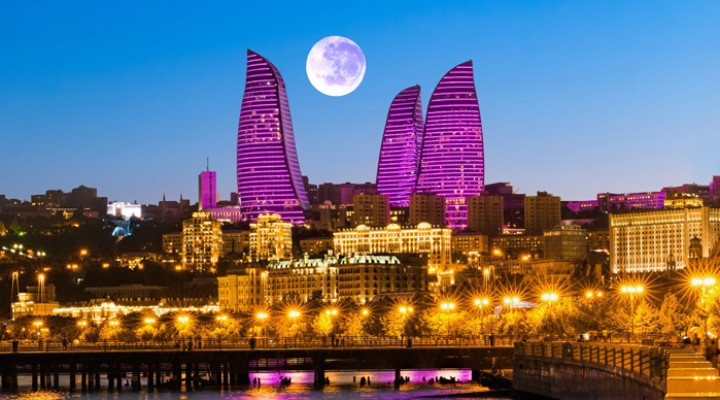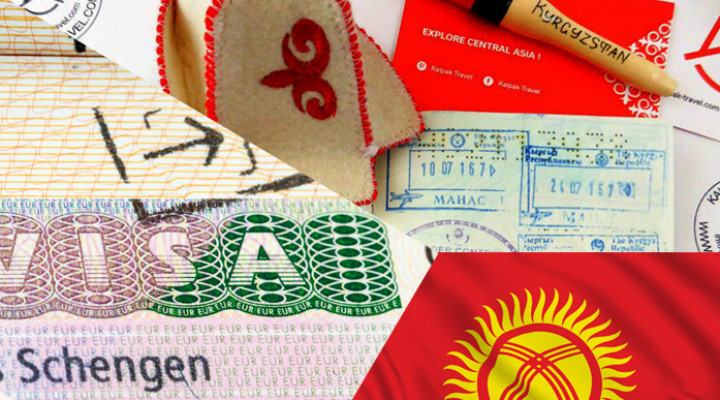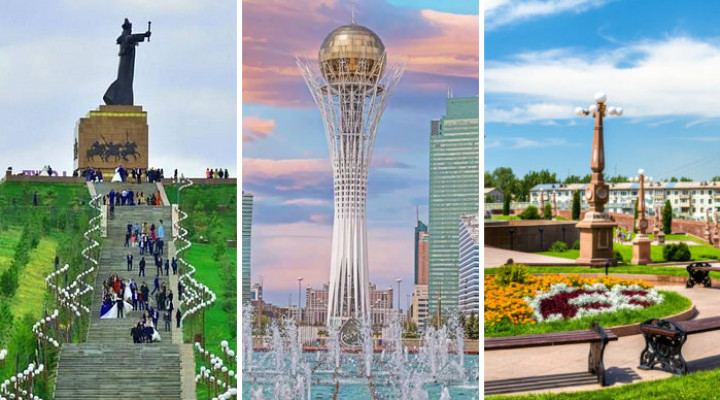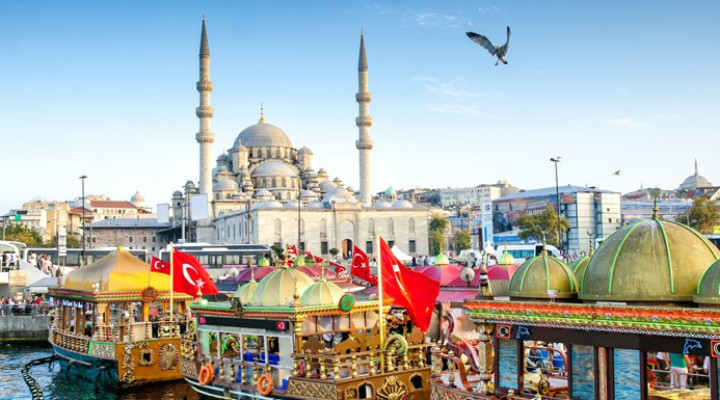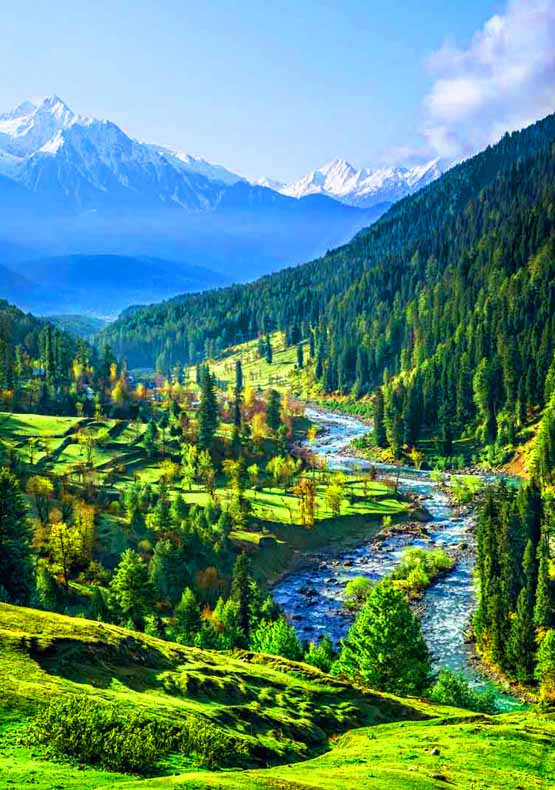Best Tourist Places to Visit in Latvia

Cat House
The Cat House is a building situated at 10 Meistaru iela in the old town of Riga the capital of Latvia. It was built in 1909 according to the blueprint of architect Friedrich Scheffel. The building is styled as medieval architecture with some elements of Art Nouveau

Riga Town Hall Square
During World War II, the town hall was completely destroyed along with its historical buildings. But, it’s been completely re-built and the guest is welcome to see the newly constructed Town hall and other buildings. It was a tradition to lit the Christmas tree at the town hall, and thus memorial planks can be seen here where new Christmas trees are decorated everywhere. Everything is worth seeing in the town hall and its easy access by foot. Sitting by the town hall can give a better look of all the beautiful building surrounding the place.

The Ethnographic Open-Air Museum of Latvia
The Ethnographic Open-Air Museum of Latvia is one of the oldest open-air museums in Europe. It is located on the lightly wooded banks of Lake Jugla, and about 30 minutes from Riga. The museum house all antique and rare items as it began its collection before the war, and still many of its items are still in very good condition. All four of Latvia's provinces are displayed in the building along with 118 historical buildings. The museum offers the historical region of the different culture of the people of Latvia, the traditional Latvian farmsteads, dwelling houses, historical churches and many others

Statue of Roland

Freedom Monument
The Freedom Monument is a memorial located in Riga Latvia honouring soldiers killed during the Latvian War of Independence. It is considered an important symbol of the freedom independence and sovereignty of Latvia. Unveiled in 1935 the 42-metre high monument of granite travertine and copper often serves as the focal point of public gatherings and official ceremonie

Old City Riga (Vecriga)
Old City Riga (Vecriga) is the historical center and a neighborhood of Riga Latvia located in the Central District on the east side of the Daugava River. Vecrga is famous for its old churches and cathedrals such as Riga Cathedral and St. Peters Church. In the early 1990s Vecrgas streets were closed to traffic and only residents of the area and the local delivery vehicles were allowed within Vecrgas limits with special permits. Vecrga is part of a UNESCO World Heritage Site listed as the Historic Centre of Riga which also includes most of the surrounding Central district.

Riga Central Market
Riga Central Market is Europes largest market and bazaar in Riga Latvia. It is one of the most notable structures from the 20th century in Latvia and has been included in the UNESCO World Heritage Site list together with Old Riga in 1998. It was planned from 1922 and built from 1924 to 1930. The main structures of the market are five pavilions constructed by reusing old German Zeppelin hangars and incorporating Neoclassicism and Art Deco styles. The market is 72300 square meters wide with more than 3000 trade stands.

House of the Black Heads
The House of the Blackheads is a building situated in the old town of Riga Latvia. The original building was erected during the first third of the 14th century for the Brotherhood of Blackheads a guild for unmarried merchants shipowners and foreigners in Riga. Major works were done in the early 17th century adding most of the Mannerist ornamentation. The sculptures were made in the workshop of August Volz. Additionally it is the site of the first decorated Christmas tree which was erected in 1510.

Riga Cathedral
Riga Cathedral formally The Cathedral Church of Saint Mary is the Evangelical Lutheran cathedral in Riga Latvia. It is the seat of the Archbishop of Riga. The cathedral is one of the most recognizable landmarks in Latvia and is featured in or the subject of paintings photographs and television travelogues.

Alberta Iela
Albert Street is a street in central Riga known for its Art Nouveau buildings. It was built in 1901 and named after Bishop Albert who founded Riga in 1201. Many of the apartment buildings along the street were designed by the architect Mikhail Eisenstein who was particularly active in Riga at the beginning of the twentieth century. His creativity is reflected through the various atypical decorative buildings along Albert street. The architectural style makes use of structural and decorative elements of romantic nationalism common to northern Europe at the time. Konstantns Pkns and Eiens Laube a teacher and his pupil respectively were prominent in building design on the street at the same time. Other authors of buildings of Alberta iela include Baltic and Baltic German architects Paul Mandelstamm Hermann Hilbig and Heinrich Scheel.

The Corner House
The Corner House is a historic building in the city center of Riga Latvia. It was known as the headquarters of the Soviet KGB in Latvia from 1940 to 1941 and from 1944 to 1991. The official address is 61 Brvbas iela. Designed by architect Aleksandrs Vanags the construction of the house was started in 1910 and was built in 1912 as apartments and shops. It housed the music school of the Imperial Russian Society of Music a library and a bookstore sweets and fruit dairy products flower shops and a pharmacy of the Ministry of National Welfare. During the Latvian War of Independence the Latvian Revolutionary War Committee used the building briefly in 1919. In 1920 the new government of independent Latvia took over the building for government use including the Ministry of the Interior and other offices.

Riga Zoo
Riga Zoo is a city-owned zoo in Riga Latvia. It is located in the Mezaparks neighborhood next to the Mezaparks park on the western bank of ezers lake. Riga Zoo houses around 4000 animals of nearly 500 species and is visited by 250-300000 visitors annually. The zoo offers various sponsorship options and states that it will accept any kind of sponsorship except if it contradicts the goals of the zoo - humane handling of animals no trading or hunting of wild animals - or promotes addiction-forming products. One can become an honorary guardian of an animal by donating 10 Latvian lats or more by becoming a guardian a person or company receives a plaque inscribed with their name or logo placed next to the funded animal. Sponsors who have donated more than 500 lats also receive a plaque in a stand near the central entrance of the zoo. If many sponsors have contributed to the building of an animal house a stand listing all sponsors may be placed at the animal house in question. Sponsors who have contributed more than 50% of funding for an animal house can also name the building. Riga Zoo enacts several scientific research and wildlife conservation projects.

Riga Central Station
Riga Central Station is the main railway station in Riga Latvia. It is known as the main point of Riga due to its central location and most forms of public transport stop in this area. Part of the building is a shopping center.

Riga
It's one of the major cities in the Baltic. The place blends in so well with its old tradition and modern lifestyle. The city is full of surprises on every road and corner as there's so much that meets the eye. A lot of footprints has been left on this city which makes it European's most exciting metropolis. The Old town is mingled with Gothic spires, cobblestones and breathtaking river views. It offers an adventure for taste buds with its great value bistros and cafes. The city is big enough to keep you busy for days with day trips to see Riga Attraction and Latvian Attraction.

Jurmala
If sandy beaches, architecture, food, pine trees are one's ideal part of the holiday. Then, this magnificent playground is a resort like no other place in Europe. It's just 30 minutes away from Riga and has been a beloved seaside destination for tourist over many years. The place was originally a cluster of fishing villages, and it looks like the old folks have left a traditional architectural blend to few contemporary to the place. To add more beauty to this enchanting city, nature captures the place with its fresh air, pendent pine trees and a clean environment to give the tourist a state of tranquility

Gauja National Park & Zvartes Rock
The Gauja National Park is one of the first national parks in Latvia. The park features different forms of landforms, sandstone, natural springs, mesmerising views, biological diversity, historical and cultural monuments. There are many caves to explore in every corner of the park, and out of all the exploration, the Zvartes Rock is a must see sight! The rock is the most popular sandstone rock named after a plantation which was torn down after WWII. It has a visitor centre which is an excellent place for recreation and leisure activities. There are quite a few good picnic areas to be enjoyed by the whole family or friends

Cesis Castle
The history of Cesis can be traced back to 800 years ago as its interlinked with Cesis Castle around the 13th century. It is so well preserved that its beauty and grace stand out from any other castle of the period. The castle is appealing to look at the day and night time, especially when one climbs to the top tower with a candle in their hand. One can enjoy the night view of the old town, castle parks and ruins of the castle. That's up against the castle, but as one descends down the castle, there's a good look one gets to see at the castle prison

Sigulda
Sigulda gives one a glimpse into the life of a medieval Europe. Its landscapes have inspired many poets, painters and lovers and many still continue to embrace its beauty. The stunning scenery and history are a treat for the eyes in all seasons especially the autumn time. The forested valley of Sigulda is imbued in myths and legends. There are a number of attractions to visit and to name a few the Old Sigulda Castle, Tarzan's Adventure Park, The Aerodium and many others. From the feeling of poetic ruins of the castles up to get a feel of adrenaline heaven, or even discover Latvian spirituality, one can enjoy a memorable journey!

Jelgava
Jelgava is called the Jewel of Zemgale. The hospitable city is one of the oldest cities in Latvia. It is only 40 km away from Riga who is excellent at welcoming and receiving guests. It's also one of Latvia tourist spots. There's a cultural enrichment with the growing years and is willing to show off its gems to the world. It is rich in historical, cultural, architectural, natural monuments as well as contemporary and recreational facilities. For many centuries, it has been an educational, economic, and cultural centre of Zemgale. The culture and art industry is found at every corner of the street, but it also has active tourism on hikes, tours, adventure activities

Daugavpils
As the city is located on the river bank of Daugava, therefore it derived its name. The town is only 232 km away from Riga. It is separated by the river and is surrounded by beautiful landscape and woods. With so many footprints left in the country, the town has transformed from antiquity to modernity. The history has left its mark in the diversified architecture and culture of the place. Tourist flock to see the exquisite art centres, museums, the fortress along with an adventurous journey to a zoo, event and other activities

Ventspils
The Latvian city port is a bustling city of beaches, public art and maritime heritage. It is the city's oldest port carrying an aroma of the sea all over town and one of the best of Latvia tourist places. There are interactive visitor shows and tours much in tune with today. Ventspils' tourism has progressed in leaps and bounds making this industrial town a refined soul. There are interesting monuments to visit as the city is smeared with the expression of the Cow Parades. The city has also devoted heavily on art bringing colour and joy to the streets of the town.

Rundale Palace and Museum
The Rundale Palace and Museum was built for the Dukes of Courland by Italian painters and Berlin sculptors. It is set in the south of Latvia, Pilsrundāle, 12 km west of Bauska. The interior decorations of the palace were inscribed between the years 1765-1768. The Palace has the Great Gallery, the White Hall, Gilt Hall which are all open to the public. The Rundale Palace Museum houses the history of Latvia and displayed though arranged exhibitions, collections and publications. It also has a French-style park with fountains, rose garden, green theatre and parterres that manifest the triumph of art over nature

Kemeri National Park
Kemeri National Park is the third largest national park in the country occupied mostly by mires and forest. The park is known for its Kemeri bog, biological diversity, therapeutic mud and mineral waters. It is home to fens, moss and transitional bogs due to its wetlands. One can go on a walk along nature, see the bogs, cycle along the Green Dune or even spend birdwatch at the Meadows and Lakes. In the middle of the forest, the meadows are seen with Polski horses and Heck cows grazing in the greens. The Park also has its own resort along with a forest house which is just 2 km away from Kameri.

Kuldiga
A town set in the past with the sun still high in the sky. The sleepy and romantic town is wandered more by curious tourists for its architect, waterfall and cobblestones. It's one of the Riga tourist places because the aura of the people is full of passion and grace in their hearts. One can explore the charming streets and the colourful little houses of the local people. The town is alive with traditional markets on handlooms with the craft of weaving. The place even has a school that teaches the craft of weaving and thus their traditional clothes and culture is being kept alive

Liepaja
The port city is set on Latvia's coast on the Baltic Sea. It's a pristine town with an artistic soul offering good fresh local seafood on every menu. The sea-run all over the place and has its individual streak at the Blue Flag Beach. Even if it’s a port, there's elegance reflected in its architecture, timber houses, grand old warehouses up to its luxury hotels. The art style Art Nouveau has a strong influence on many of its architectural buildings. The town also hosts various festivals, events throughout the year attracting many visitors to see the culture

Cape Kolka
The cape is enchantingly desolate and hauntingly beautiful. It is surrounded by the Irbe Strait on the shores of Latvia. The memory captures the beauty of this place during the migration season when thousands of birds fly over the cape. It's a heavenly sight that one would ever get to experience. Its paradise for beach lovers.

Turaida Museum Reserve
The name Turaida means 'God's Garden' is a heavenly place with western and southern towers. There are many castles, church, garden, hills and ancillary building that are situated in the area of the museum. The museum reserve is rich with its architectural, historical, archaeological and artistic monuments that say a story about the historical events that happen over thousands of years. While at the museum reserve, one can visit the Turaida stone castle, Turaida church, Turaida memorial etc. Visitors also take part in the summer solstice, one of the annual festivals of Latvia at the Folk song Hill which takes place on 21 June every year

Latgale
The land of blue lakes as it has the largest number of lakes that are congregated in the area between Kraslava, Angola and Ezernieki. Latgale is the only place that speaks its own language with Catholicism being a dominant religion. The nature trails have been created along the enthralling banks that lead visitors to many of the Latvian castles. Under the hill of Latgale, there's an abundance of materials for craftsmen and artists. And, Latgale is traditionally known for its pottery works such as pots, jugs, woollen stuff, baskets, boxes created by the artistic craftsmen and artist of Latvia.

Razna National Park & Razna Lake
Razna National Park was created for protecting the natural values of Razna Lake and its surrounding areas. There are many lakes around the park, but one of the most important lakes in this area is Razna Lake. It is the second largest lake in Latvia and has facilitated recreational areas. As the lake has sandy beaches and its rich with fishes, it is also known as the Latgale Sea. Fishing is a popular activity here, and it’s a special interest that people even fish under ice in winter. The amazing landscape, historical, religious and cultural traditions are the special charm of the region

Mezotne Palace
For lovers of classicism art and architecture, there's no better example than the Mezotne Palace! Its landscape is carefully planned in harmony with the palace by boasting the beautiful park, the auxiliary buildings and the awestruck surroundings over the river. The beauty of the palace is made in an English style landscape park including a summer park, winter park and a parade yard. The place is always more enchanting to see from above in a hot air balloon, it is like scanning the whole palace in real. The palace is also a home for hotels, bars, restaurants, pub and they undertake many other services as well.

Aluksne
The English Neogothic castle was built from 1859-1863 directed by Alexander von Vietinghoff. Located in the northeast of Latvia near the borders of Russia and Estonia. Behind the castle, there was an ice cellar and around the cellar, and to its left corner, there's a coat of arms of Alexander's family. When he moved to Germany, he took all of the artwork and parts of the interiors with him. The castle is now a museum known by the name, Aluksne museum and nature museum. The museum has various exhibitions and expositions such as sculptures, Leo Kokle story, Marienburg Fortress and many others.

Bauska Castle
Bauska is a town in the southern region of Latvia situated at the conjunction of the shallow rivers Memele and Musa. The castle consists of two sections: Livonian Order Castle, it is built in the 15th century and it is one of the oldest. The other is the residence of the Dukes of Courland, it was a more recent part of the rag built in the 16th century. There's a lot to explore in the castle interiors and its historical exhibits. Visitors can discover the collection of the castle' cannons, the Great tower or even go on a themed excursion or participate in activities and programs hosted in the museum

Courland
Courland is a historically distinct area of west and southwest Latvia bounded by the Baltic Sea and the Dvina River. There were major inhabitants of the Jews living here in the early 20th century, and they played an important role in the creation of wealth and the rich cultural life of the area. Most of the architecture was done by the Germans in most cities and towns. As of now, it is sparsely populated with strong ethnic Latvian population. While in Courland, there are many places to visit, such as the Cape Kolka, Šlokenbeka Castle, Town of Talsi, Venta waterfall, Town of Ventspils, Venta rapid, Dundaga castle and many others.

Riga Old Town
Riga's Old Town is filled with charming cafes, medieval churches and mesmerising art and culture of Latvia. It's in the heart of the city and has become one of the top destinations for tourists. Its a popular entertainment district with an abundance of architectural gems and cobblestone streets. This place gives tourists a vice to feel and is relaxed, entertained at the crafts houses, John's courtyard, churches of the old town, art galleries, museums, music clubs and many others! From artistic architecture, sacral structures to world-class museums, there are many things to see and do in this UNESCO World Heritage site.

St. Peter Church
St Peter’s Church in Riga’s tallest church. The church boasts a breathtaking view of the modern part of the old town, Bay, river and the port. The tall Gothic tower was built in the Baroque style, with the big domes and designs. The tower clock and bells had just one hand showing hours. At the church, one can enjoy art exhibitions, concerts, the art of ancient builders, the history of the church on stands and screens. See the original statue and get to know the skill of the ancient builders. Examine the interior designs of the wooden epitaphs, altar and the renovated stone works.

Riga Dome Cathedral or Saint Mary’s Dome Cathedral
The cathedral is the centre place for the Archbishop of the Church as its one of the oldest sacred buildings in Latvia. In the year 1211, only the cathedral was laid, but later on, a monastery and cathedral school were built next to it. It's one of the tallest towers of the time with 140 meters in height. The building has several combine features of early Gothic, Romanesque, art nouveau and baroque styles. There is a museum of the history of Riga, cloister and concert halls

Riga Motor Museum
The museum houses the largest and wide array of antique motor vehicles in the Baltic. There is an exhibition at the museum that shows the story created for antique vehicles, famous people and the most historical events that happen in the automotive world. There are innumerable things to see at the museum which will draw the attention of any visitor. Visit the museum and see a replica of the car Benz Patent Motorwagen, Kremlin collection or the Soviet cars, a collection of specialized and military machinery. There is a noteworthy collection of racing cars as well as recording breaking motors to see at the museum!

Latvian National Theatre Riga
The Latvian National Theatre Riga is one of the main and oldest theatres in Riga. It also has strong historical importance as Latvian's independence was first proclaimed at this place. Located at the centre of Riga, and received its name upon the restoration of its independence later on. The building is a combination of style, elements of Art Nouveau and Baroque which was very popular in Riga at that time. The great hall can accommodate 850 people and 100 people at the Actor's hall. The theatre display shows for spectators in accordance with its main task.

Latvian National Opera and Ballet
The Latvian National Opera and Ballet is the national opera of Latvia. Visitors to this opera can expect to see world-class classic opera, modern opera, children's opera-ballet performances and Latvian's original productions. More than anything else, the fan's are more excited to see their Latvian opera stars returning home and performing it at their national opera. There's a tour in the opera building which shows visitors the 19th-century architecture, vibrant history etc. The opera wants to maintain its classical and romantic opera, but they are also open to a contemporary form of performances.

Latvian National Museum of Art
The museum has more than 52,000 works of art by Baltic and Russian artist and sculptors. It is one of the largest art museums in Latvia and offers temporary exhibitions. Visitors can take interesting educational programmes. There are 19-20th-century Latvian art exhibitions which include the masterpieces of Janis Rozentals, Purvitis and Valters. Recently, there's a new exhibit located underground of the museum offering temporary exhibitions only. The roof of the museum always offers a surprise for the visitors as it is an eagle point to see the beauty of Riga.

Taka Spa
It’s a hidden gem located in Riga. The moment one steps into this place, there's nothing more to expect, the only relaxation kicks in immediately. On the second floor, the couple treatment is happening which is in a much bigger room, with curtains around the massage beds preparing customers for the treatment in private. It is delightfully cosy with a constant smell of wood and faint aromatic oils that brings a feeling of paradise. And since it is directly under the roof, there is a large window that lights up the room. There are several treatments here, from aroma oil to hot stone massages.

Riga’s Art Nouveau Center
The Rigas Art Nouveau Center is the only place that value and pays its respects of the historical heritage of Art Nouveau. It offers one into discovering the authentic environment of the movement and savouring it in an early 20th-century apartment in Riga. Its interiors were created in 1903 so that visitors could see the beauty of Art Nouveau at its fullest from home planning right up to the structure of its doors and windows. One of the central room is the drawing room where it is decorated with flowery patterns, lavish lounge. Visitors can also visit the other room and see the structure and style of Art Nouveau's influence at the time.

Nativity of Christ Cathedral
Nativity of Christ Cathedral is the oldest and largest Orthodox Church in Riga which has withstood time and the Soviet era. It was a planetarium and restaurant, but it's restored its place to being a sacred building where religious ceremonies are being performed on a regular basis. The cathedral is a symbol of stability which can be visited by anyone in need of peace and sanctuary. The construction took place in the year 1876, and its official opening was in 1884. The interior of the cathedral is rich and of high artistic value. It has an outstanding collection of antique and valuable icons painted by the famous Russian Painter Vasily Vereshchagin.

Riga’s Central Market
One of Europe's largest market and notable structures from the 20th century. Taking a stroll along the market is pretty exciting for visitors from testing pickled cucumber to trying freshly smoked eel. It remains to be in the heart of Riga and gives a diverse shopping experience, lively conversation, personal touch, storytelling with the vendors. There's no other Attraction in Riga Sights like this as it is unique not only with its stalls and items but its pavilion, old warehouses which have been turned into entertainment hubs.

Laima Clock
The Laima Clock is located in the centre of Riga between old town and the commercial centre. It’s a traditional meeting spot for the people of this place and there are always people standing around this clock. It was first installed in the 14th century and was seen as a sign of prosperity. The main purpose of the clock was to remind people of the time they had to go to work and be on time. Laima was named in 1936 which means happiness in Latvia. The clock is not just of historical importance but it’s also a popular sovereign in Riga. To be in Riga, and not meet someone at the Laima clock would not be worth a trip or a journey.

National Library of Latvia
It is monumental, modern, beautiful and perfectly functional. This is not just a library or scientific institution but hosts a wide variety of cultural and educational events. The interior design is classic with breathtaking elements of style. One can take a nice walk across the Akmens Bridge as it is located right in the centre. As for the atrium, it is really impressive and a visitor card is available at the counter for one to explore the whole library. The 7th floor of the building offers a beautiful view, although the windows can't be opened. There is also a viewing platform on the 11/12th floor, and it is recommended to only go with a guide.



